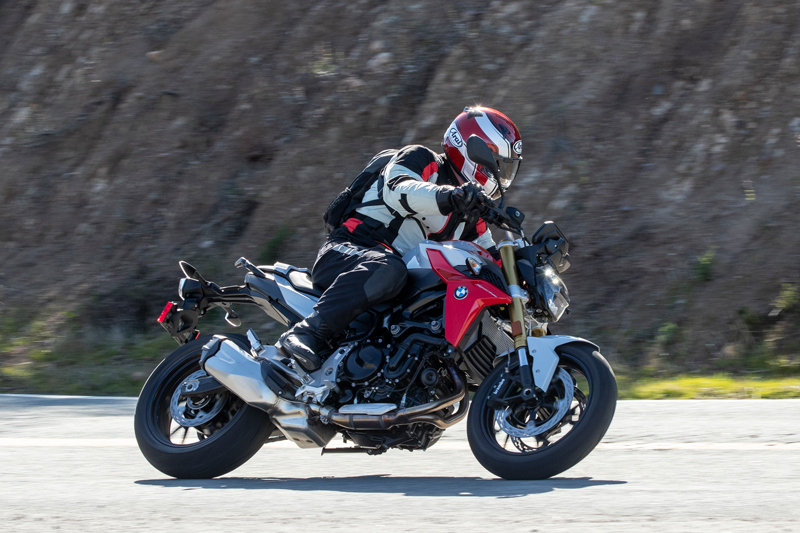
Since the launch of the BMW F 800 model family with the F 800 S and F 800 ST in 2006, these middleweight, parallel twin-powered motorcycles have been offered in a wide variety of models as lower-priced alternatives to BMW’s larger bikes. As with the R 1200 boxer twins, the most popular parallel twins have been the F 800 GS and GSA adventure bikes, with the more street-oriented F 650 GS/F 700 GS close behind. No surprise, really, since adventure and ADV-styled bikes have done well for some time now.
Conversely the F 800 ST and later GT sport-touring versions were short-lived, leaving the F 800 R streetfighter introduced in 2009 as the sole non-GS model in the lineup as of 2019. No doubt the bike’s entry-level price and the showmanship of four-time world-champion freestyle rider Christian Pfeiffer — who helped develop the naked bike he spun, slid and nose wheelied to victory — extended the F 800 R’s longevity.
2019 BMW F 850 GS vs. 2009 F 800 GS: Time to Upgrade?
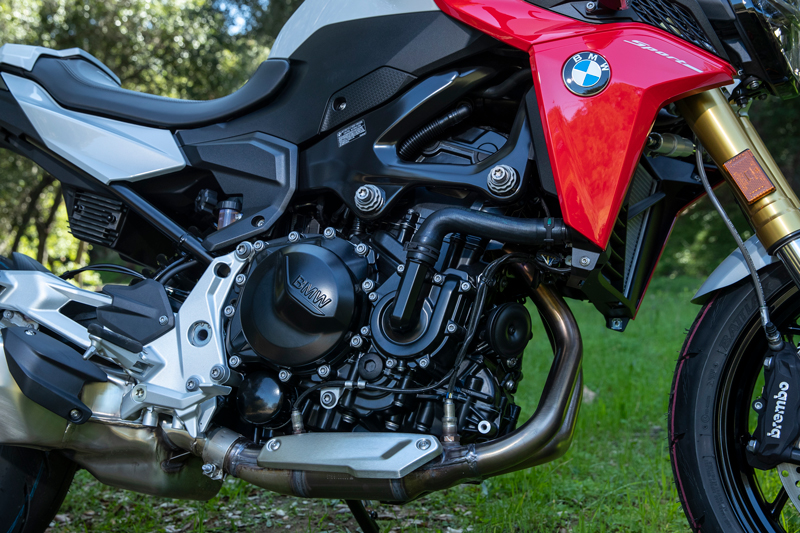
We applauded BMW’s move toward a simpler, less expensive entry-level twin with the F 800s, which had telescopic forks in place of pricier Telelever or Duolever front ends and belt or chain final drive versus a shaft. But their BMW-designed, Austrian Rotax-built engine, even with its innovative counterbalancer, never really earned our admiration. It was buzzy and raspy sounding and just didn’t deliver the satisfying, torquey throb we expect from a twin.
The F 800s performed well, but it wasn’t until BMW redesigned the engine for the 2019 F 850 GS and F 750 GS (and engine production moved to Loncin in China) that the 853cc engine they share finally came to life. The larger displacement helped, but it was mostly the switch from a balanced 360-degree firing interval with 0-degree crankpin offset to an imbalanced 270/450-degree interval and 90-degree offset that woke the powerplant up, giving it an almost boxer-like twin-cylinder growl and feel. Swapping the central connecting rod-style balancer for dual balancer shafts also tamed the vibes.
Read our 2020 Guide to New Street Motorcycles here.
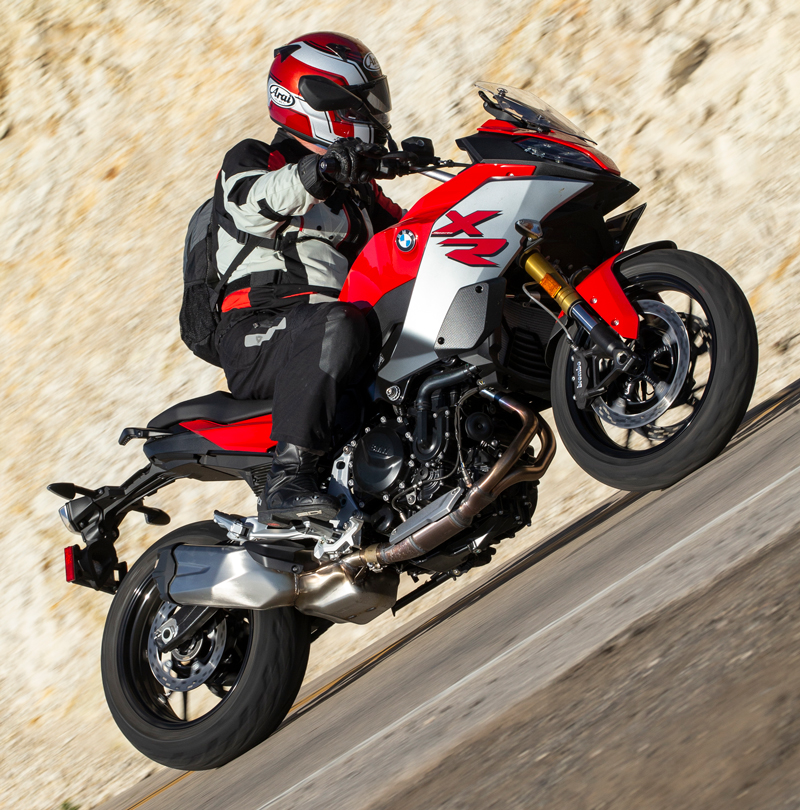
Mark’s Gear
Helmet: Arai Regent-X
Jacket: Spidi All-Season H2Out
Pants: Rev’It
Boots: Sidi Performer Gore-Tex
Fast-forward one year and the new parallel twin has been enlarged once again and slapped into a pair of dynamic new middleweights, the F 900 R and F 900 XR, roadster and sport-adventure bikes again priced as alternatives to BMW’s larger machines. Updates to the shared DOHC, 4-valve per cylinder engine for more performance and torque from F 850 status include a bump to 895cc, a new cylinder head, forged pistons instead of cast and a higher 13.1:1 compression ratio.
On the Jett Tuning dyno our F 900 R test bike churned out 88.2 horsepower at 8,400 rpm and 58.1 lb-ft of torque at 6,400 rpm, an improvement of about 3 horsepower and 3 lb-ft of torque over our 2019 F 850 GS test bike. Compared curve to curve, more torque is available across more of the F 900’s powerband, too, especially between 4,000-7,000 rpm (redline is at 9,300). All of this grunt reaches the rear wheel via chain final drive through a slick-shifting 6-speed gearbox with a cable-actuated slipper clutch that has a light pull and broad engagement band (an up/down quickshifter is available as an option).
Read our Road Test Review of the 2019 BMW F 850 GS and F 750 GS here.
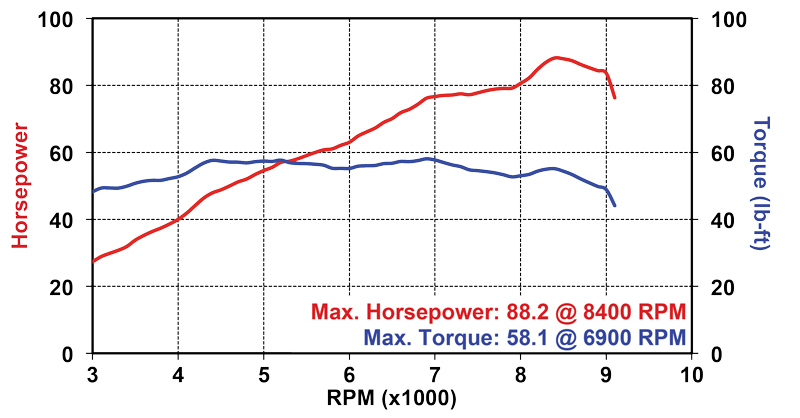
In addition to their engines, both bikes share an aluminum bridge-type frame, aluminum double-sided cast swingarm and bolt-on steel subframe (presumably to provide enough strength for the optional soft side cases and a luggage rack/top trunk). There’s a 43mm USD fork with no adjustments up front, and a single shock with rebound damping and spring preload adjustment in back — I do wish the remote knob for the latter was easier to access.
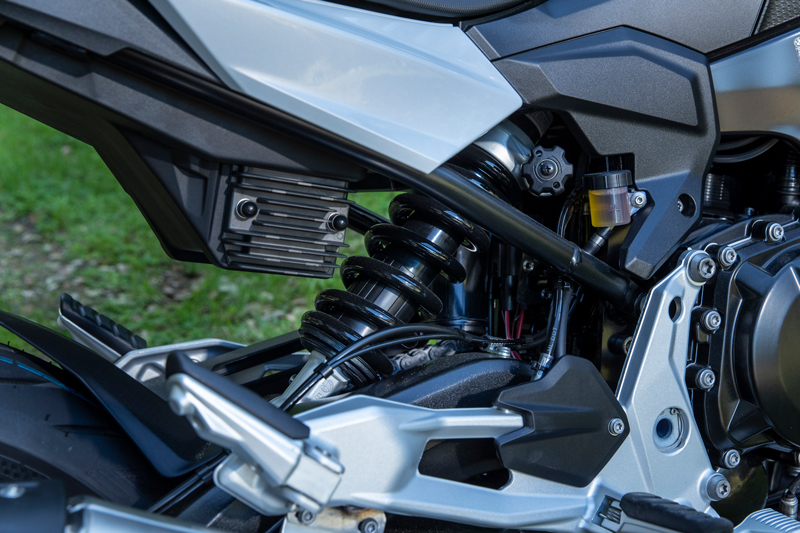
Cast wheels are shod with high-performance sport- or sport-touring tires in the same sizes, and both shed velocity with triple disc brakes that include radial-mount opposed 4-piston calipers up front and ABS. LED headlights and taillights are standard, and front and center is a large, bright 6.5-inch TFT display with a wealth of ride and vehicle information accessible via the Multi-Controller wheel and menu button on the left bar.
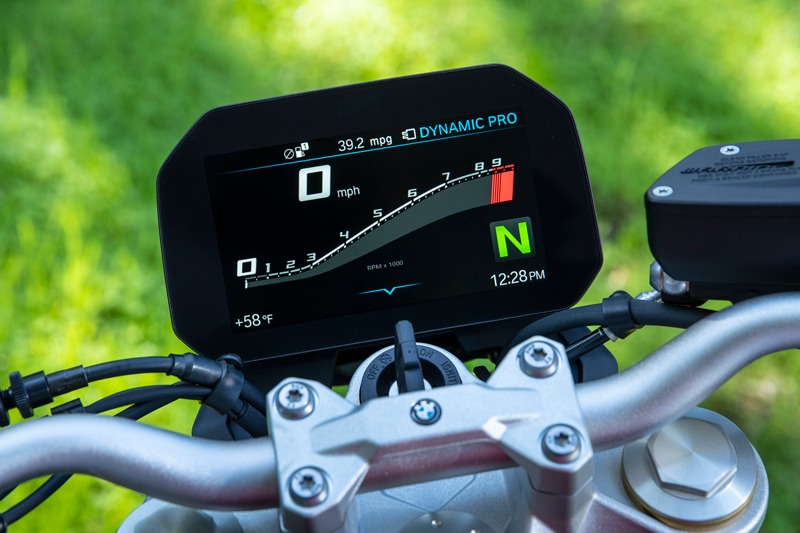
In typical BMW fashion, though the whole idea of the F 900s is a ton of fun at a lower cost, you can boost their prices considerably with a slew of nifty accessories like multiple seat options, Keyless Ride, heated grips, cruise control, a centerstand and more, as well as advanced optional electronic enhancements. These include Dynamic Electronic Suspension Adjustment (D-ESA) with Dynamic and softer Road modes and electronic preload; Ride Modes Pro, which adds Dynamic and Dynamic Pro modes to the standard Rain and Road engine modes, and enables cornering ABS, MSR and Dynamic Brake Control (DBC), which detects emergency braking and reduces torque output to counter unintentional opening of the throttle. The Ride Modes Pro plug-in dongle also upgrades the standard traction control to Dynamic, and of course all of this stuff is infinitely adjustable six ways from Sunday.
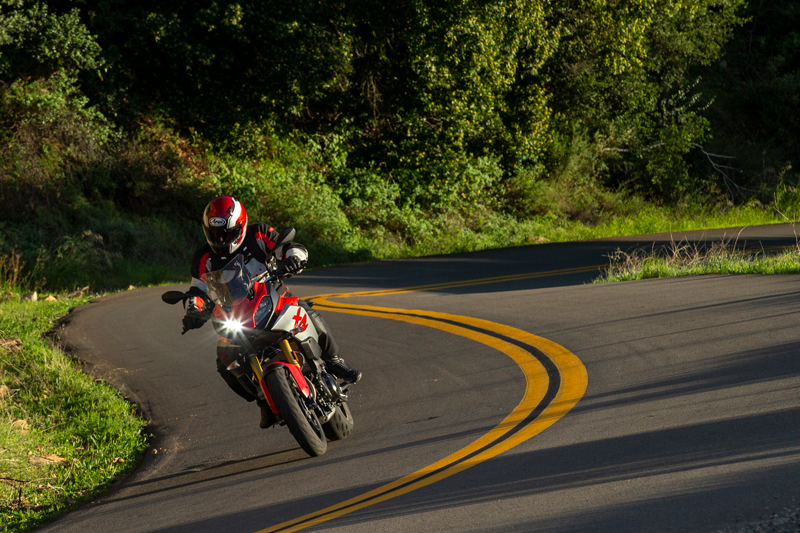
Fortunately both bikes work just fine without spending a moment playing with settings or one might never leave the garage. The F 900 R is the sportier of the two, with a light wet weight of 471 pounds, shorter suspension travel and steering geometry that make it quite a ripper in the corners. It also has a lower seat, higher footpegs and flatter bar for sport riding and to help it accommodate shorter riders, yet the seating position is still quite comfortable, and while the suspension is set firm for sport riding it still soaks up the bumps quite well. Overall it should appeal to a broad range of riders looking for great handling and some techy stuff at a lower price.
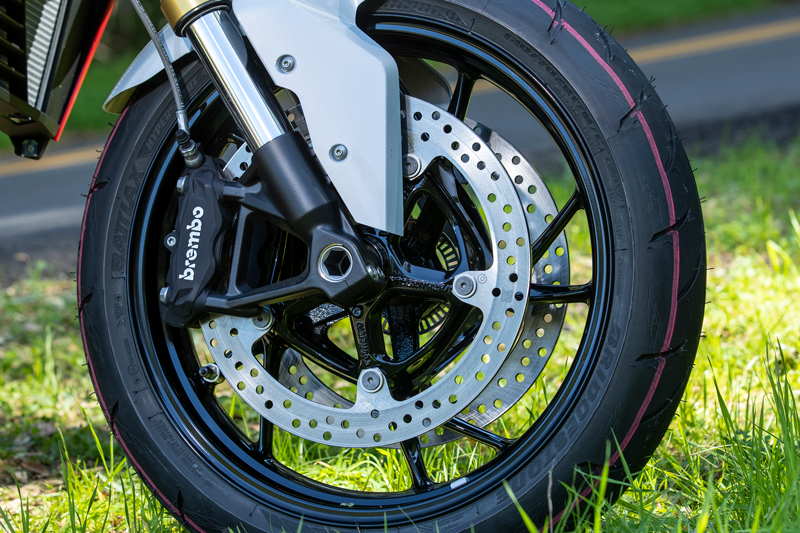
To justify its higher cost, the F 900 XR adds a substantial fairing and small adjustable windscreen that together provides a fair amount of wind protection (I do recommend the optional taller windscreen) and contributes to its higher wet weight of 486 pounds. It also has a taller handlebar, significantly more suspension travel, lower pegs and slightly higher seat in keeping with its adventure-influenced design, yet I could still support it adequately at stops with my 29-inch inseam. Add a pair of side cases and it would make a very nice light tourer with a good balance of handling and power.
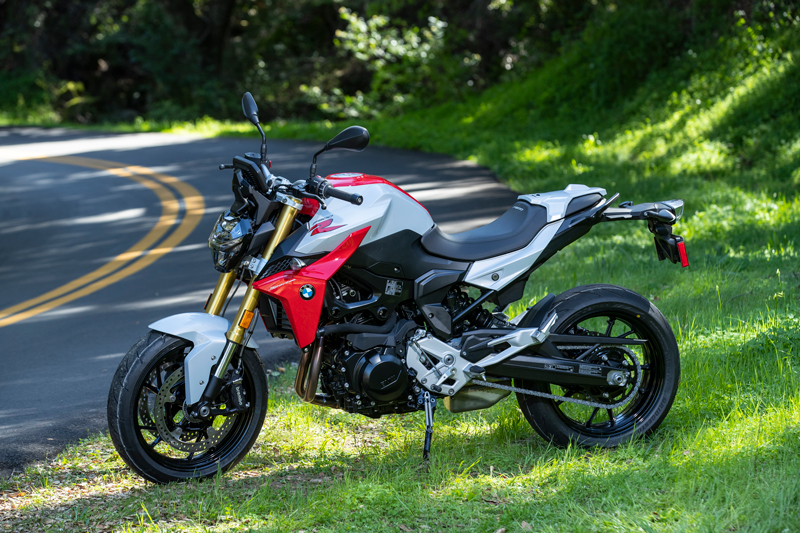
Although the light, plastic-welded fuel tanks on the R and XR have capacities of just 3.4 and 4.1 gallons respectively, I never saw fuel economy below 37 mpg from the required 91 octane, and that was after nearly 250 miles with a heavy throttle hand — they are capable of much better. Although the BMW R 1200 boxer engine makes more power and torque, in many ways the F 900 parallel twin’s character is equally satisfying, especially its growl and ripping-velvet feel that comes with a smooth rushing surge of torque in the midrange. Paired with either the R roadster or XR sport-adventure platforms, the combination creates a very fun and functional middleweight for whatever sort of ride you care to enjoy.
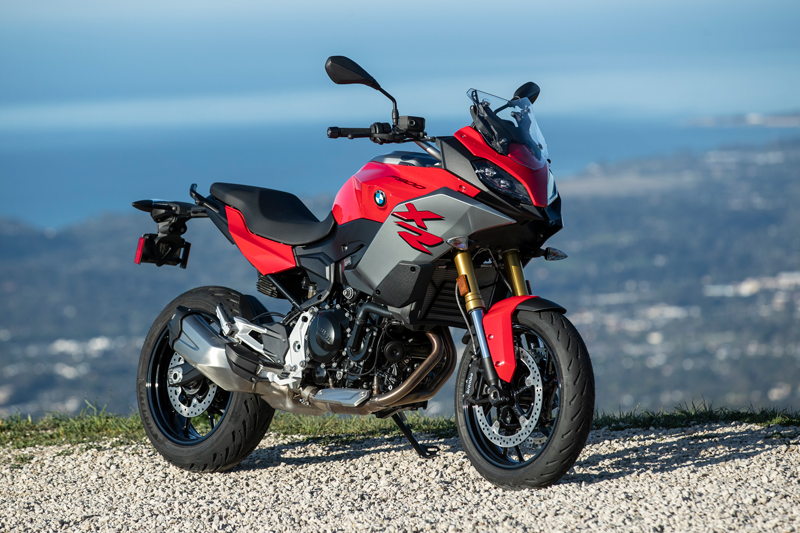
2020 BMW F 800 R/XR Specs
Base Price: $8,995/$11,695
Warranty: 3 yrs., 36,000 miles
Website: bmwmotorcycles.com
Engine
Type: Liquid-cooled, transverse parallel twin
Displacement: 895cc
Bore x Stroke: 86.0 x 77.0mm
Compression Ratio: 13.1:1
Valve Train: DOHC, 4 valves per cyl.
Valve Adj. Interval: 12,000 miles
Fuel Delivery: BMS-M EFI
Lubrication System: Dry sump, 3.2-qt. cap.
Transmission: 6-spd, cable-actuated wet slipper clutch
Final Drive: O-ring chain
Electrical
Ignition: BMS-M
Charging Output: 416 watts max.
Battery: 12V 12AH
Chassis
Frame: Steel bridge monocoque, load-bearing engine, cast-aluminum swingarm
Wheelbase: 59.8/59.9
Rake/Trail: 29.5 degrees / 4.5/4.1 in.
Seat Height: 32.1/32.5 in.
Suspension, Front: 43mm USD telescopic, no adj., 5.3/6.7 in. travel
Rear: Single shock w/ adj. spring preload (remote) & rebound damping, 5.6/6.8 in. travel
Brakes, Front: Dual 320mm floating discs w/ opposed 4-piston radial calipers & ABS
Rear: Single 264mm disc w/ 1-piston floating caliper & ABS
Wheels, Front: Cast, 3.5 x 17 in.
Rear: Cast, 5.5 x 17 in.
Tires, Front: 120/70-ZR17
Rear: 180/55-ZR17
Wet Weight: 471/486 lbs.
Load Capacity: 477/479 lbs.
GVWR: 948/965 lbs.
Performance
Fuel Capacity: 3.4/4.1 gals, last 1.0 gal. warning light on
MPG: 91 PON Min
Indicated RPM at 60 MPH: 3,500








Sadly the most common talking point of this review, cost and engine experience, were the killing factors of the F800ST and GT. We *really* wanted to like them, we really did, but (especially the GT) it didn’t offer a great perception of ‘value’ – the almost $14k fully loaded OTD price of the GT was a bit hard to swallow against its vibey 90HP.
So I’ll ask please, BMW, don’t give up on midsize sport-tourers, maybe try again with this improved powerplant.